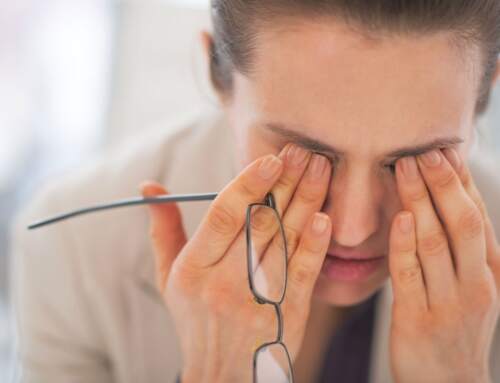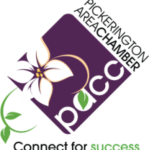Attention Deficit Hyperactivity Disorder (ADHD) is a complex condition that affects millions of people around the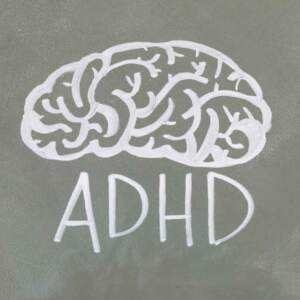 world. It can range from mild to severe and can have a significant impact on an individual’s daily life.
world. It can range from mild to severe and can have a significant impact on an individual’s daily life.
In this article, we’ll take a closer look at ADHD: what it is, who gets it, and whether massage therapy can help those affected. We’ll also explore how massage may be used as part of an overall treatment plan for individuals with ADHD.
So let’s dive in and get to know ADHD and its potential treatments better.
What Is Adhd
Attention deficit hyperactivity disorder is no ordinary disorder. It’s an all-consuming, never-ending battle for those who suffer from it. It’s a restless energy that can’t be contained and a mind that refuses to stay focused.
ADHD is an often misunderstood condition that affects millions of people around the world, and its effects can be devastating to those affected by it. The symptoms of ADHD can vary from person to person, but generally speaking, they include difficulty paying attention, impulsivity, hyperactivity, and restlessness.
These adhd symptoms may interfere with school work for or cause problems at home or in other social situations. ADHD is typically diagnosed in children and teenagers who have difficulty concentrating at times that require sustained mental effort and staying focused on tasks.
First acknowledged in the early 1900s, this condition has been referred to by various names, one of which was minimal brain dysfunction. It was not until 1976 that medical publications began discussing it as a concern of mental disorders for adults.
One could argue that ADHD is a misnomer as it labels an individual who focuses on issues deemed unimportant to a main objective. This is not a deficiency in concentration, but rather an excess of attentiveness towards numerous things.
With proper diagnosis and treatment plans in place, many people with ADHD are able to lead normal lives despite their condition.
Who Gets It
 People of all ages can be affected, though it’s more common for children and adolescents. It is believed by most estimations that approximately 4.3% of children in elementary school have received a diagnosis of ADHD. Nevertheless, surveys indicate that as many as 18% of children within some geographical regions are using medication for ADHD, with the figures predominantly affecting upper middle class white boys. Many experts acknowledge that non-white children and youngsters with limited access to healthcare are possibly not getting the attention they need when it comes to this disorder. Consequently, Attention-deficit hyperactivity disorder is recognized as both over-diagnosed and under-diagnosed.
People of all ages can be affected, though it’s more common for children and adolescents. It is believed by most estimations that approximately 4.3% of children in elementary school have received a diagnosis of ADHD. Nevertheless, surveys indicate that as many as 18% of children within some geographical regions are using medication for ADHD, with the figures predominantly affecting upper middle class white boys. Many experts acknowledge that non-white children and youngsters with limited access to healthcare are possibly not getting the attention they need when it comes to this disorder. Consequently, Attention-deficit hyperactivity disorder is recognized as both over-diagnosed and under-diagnosed.
Here are three key points to know about ADHD:
1. ADHD is more common in boys than girls by 2.5 times, with symptoms typically appearing before age 7. Common symptoms of adhd in children include difficulty following instructions, excessive talking, restlessness, and fidgeting. However, researchers are noticing that girls show signs of the disorder differently.
2. Symptoms in adults may look different than those in children—for example, adults might have trouble managing time, prioritizing tasks or exuding impulsive behaviors. The diagnosis process for adults includes psychological evaluation and physical exams to rule out other conditions that could be causing the symptoms.
3. 30-70% of children diagnosed with ADHD still show signs of it as an adult.
Massage can help reduce stress hormones like cortisol while increasing endorphins which can make someone with ADHD feel calmer and help them focus better on tasks at hand.
Causes of Attention Deficit Hyperactivity Disorder
ADHD is one of the most common mental health conditions and can cause significant distress if left untreated. The cause of the disorder is not known, but it is believed to be linked to genetics. Environmental factors and lifestyle may also play a role in its development.
Neuroimaging studies show differences in brain structure for those with ADHD compared to those without it, suggesting that there may be an underlying neurological basis for this condition. Children with ADHD have brains that are 3-4% smaller than those without the disorder. Nonetheless, medicated children with ADHD have similar amounts of white matter volume as non-ADHD individuals.
The root cause of ADHD is believed to be related to chemical imbalances in the brain. Specifically, there are issues related to the synthesis, transportation and absorption of dopamine, as well as disruption of noradrenaline in two areas of the brain associated with decision making and movement – the frontal cortex and basal ganglia.
Although the precise reasons for it are not yet fully understood, a number of factors that may contribute to the development of ADHD have been identified. One such factor is genetics, as a significant proportion of those diagnosed with the disorder have a close family member who also suffers from it. Additionally, there is evidence of changes in brain function that are associated with the disorder, specifically in regions responsible for motor control and planning, which are negatively affected by imbalanced levels of certain chemicals in the brain. Finally, maternal behavior such as smoking or drinking during pregnancy, as well as exposure to environmental toxins, have been linked to an increased likelihood of children developing ADHD.
Signs and Symptoms of ADHD
ADHD can be identified by three distinctive behavior patterns: inattention, hyperactivity, and impulsive behavior.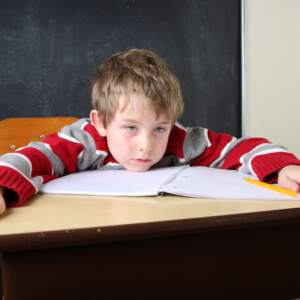 While a person with ADHD may demonstrate only one or a combination of these patterns, symptoms must persist across various contexts, including school, work, home, and social settings.
While a person with ADHD may demonstrate only one or a combination of these patterns, symptoms must persist across various contexts, including school, work, home, and social settings.
Indications of lack of attention involve being easily distracted by unimportant sights and sounds, neglecting to attend to particulars which leads to careless mistakes; seldom heeding instructions thoroughly and entirely; and misplacing or overlooking items like toys, pencils, books, and instruments required for a specific job.
Other symptoms of adhd include restlessness, difficulty playing quietly, blurting out answers before questions are completed, difficulty waiting, and interrupting conversations. Low self esteem and learning disabilities can also show up in a child’s symptoms.
Additionally, young children with ADHD often struggle with organization skills and fail to complete tasks without reminders from others.
These persistent symptoms can range from mild to severe in patients with ADHD and vary from person to person. While many people are diagnosed as children, some adults only realize they have ADHD after experiencing difficulties managing work or relationships later in life.
Getting a proper diagnosis is essential for ensuring successful treatment options are available for both children and adults living with ADD.
ADHD Diagnosis
Imagine a world of chaos, where the mind never stops running, and the body is going in all directions. That’s what ADHD feels like for those diagnosed with it. ADD is a type of ADHD that affects children and adolescents, making it difficult to focus, concentrate or stay organized.
Diagnosis of ADHD is essential for kids and teens with this condition to be able to reach their full potential.
ADD can only be properly diagnosed by mental health professionals who specialize in diagnosing ADHD. Through evaluation interviews, physical exams, psychological testing and other assessments, the professional will be able to determine if the child or adolescent has ADD. It is also important to rule out any coexisting conditions that could be causing symptoms similar to ADD.
There is no definitive test that can accurately determine the presence of ADHD. Diagnosis in children usually involves eliminating other potential causes and receiving input from various adults in the child’s life, such as teachers, parents, and coaches. In adults, this process may also involve feedback from family members and colleagues. Identifying other disorders that share similar symptoms and acknowledging the impact of coexisting psychiatric conditions are crucial components to diagnose ADHD.
Differential Diagnosis. Various factors can lead to children’s inattention and disruptive behavior. It is crucial to eliminate these possibilities prior to labeling ADHD as their core issue. Potential factors like depression, anxiety, learning difficulties, sleep disorders (e.g., sleep apnea and snoring), fetal alcohol syndrome, vision or hearing impairments, Tourette’s syndrome, mood disorders, and seizure disorders must all be included for consideration.
Coexisting conditions. Identifying ADHD can be challenging due to other disorders that typically accompany it, such as oppositional defiant disorder, depression, and various anxiety disorders.
Once someone is diagnosed with ADD, they will need to begin an appropriate treatment plan tailored specifically for them. This may include medication such as stimulants or non-stimulants, psychotherapy or cognitive behavioral therapy (CBT), as well as lifestyle changes like diet modifications or regular exercise. It is also important for parents or guardians of children or adolescents with ADD to take part in their care and treatment plan so they can provide support when needed.
By recognizing the signs of ADD early on and seeking help from a mental health professional specializing in the diagnosis and treatment of ADHD, a child may learn how to manage their disorder more effectively so they can live up to their fullest potential both academically and socially.
Complications of Attention Deficit Hyperactivity Disorder
Failure to treat Attention deficit hyperactivity disorder can result in various severe outcomes. Kids experiencing this condition face issues with confidence, maintaining connections, and school performance. Those with untreated ADHD are susceptible to a higher number of car accidents while driving and are more prone to developing a substance use disorder or other addictive problems in their attempts to self-medicate and manage the disorder during their later years.
ADHD Treatment
When it comes to treating Attention Deficit Hyperactivity Disorder in children or adults, there is no one-size-fits-all approach. For parents of children with ADHD, understanding the different treatment options available can be daunting.
Here are some of the more popular treatments for ADD/ADHD:
1. Medication: Stimulant medications, usually from classes of drugs called methylphenidates or dextroamphetamines, are often the go-to option for treating ADHD. These medications help to increase focus and reduce hyperactivity. Nonstimulant medications like a norepinephrine reuptake inhibitor may also be prescribed in some cases.
2. Behavioral Therapy: Behavioral training helps patients with ADD/ADHD learn new skills to improve their behavior and concentration, as well as manage their emotions better. This type of therapy often involves setting goals, rewards for good behavior, and consequences for certain behavior problems.
3. Massage Therapy: Massage therapy has been shown to reduce stress and lessen symptoms of ADD/ADHD in many kids with ADHD. It also helps them relax, which can improve their overall ability to focus on tasks or activities throughout the day.
The adverse reactions resulting from the use of drugs are a concern for primary care providers, particularly when the recipient is a young child. These unwanted effects could manifest themselves as decreased appetite, heightened blood pressure and heart rate, disturbed sleep patterns, and occasionally, the emergence of facial or vocal spasms. Such symptoms are indicative of the drug being poorly adapted to the patient, or the need for a dosage adjustment. Additionally, some medications used to treat ADHD are incompatible with certain asthma drugs.
Ultimately, there is no single best treatment for ADD/ADHD – each patient needs to find the right combination of therapies that work best for them – but these three treatments provide a good starting point for those looking to address this disorder in children and teens.
Is Massage Good For It
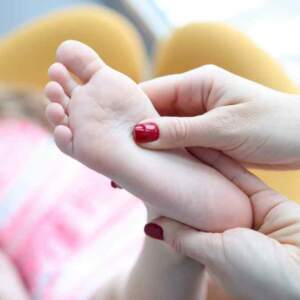 While there are various ADHD medications available to help control symptoms, massage therapy may also be beneficial for those dealing with this condition. Massage can help reduce stress, calm the mind and body, and improve sleep quality – all of which can aid in managing ADHD symptoms. It may also provide relief from physical symptoms such as muscle tension and pain, which can be caused by excessive activity or stress.
While there are various ADHD medications available to help control symptoms, massage therapy may also be beneficial for those dealing with this condition. Massage can help reduce stress, calm the mind and body, and improve sleep quality – all of which can aid in managing ADHD symptoms. It may also provide relief from physical symptoms such as muscle tension and pain, which can be caused by excessive activity or stress.
Research has shown that the practice of somatic therapy can enhance classroom conduct and social connections in children diagnosed with this condition.
In addition to providing general relaxation benefits, massage therapy has been found to have positive effects on mood regulation, impulsivity control and focus in those with ADHD. Research has found that massage may be an effective treatment option for reducing hyperactivity in children or adults with ADHD when combined with traditional treatments like behavioral therapy or medication. Because of their short attention span, a 30-minute massage may be more beneficial than a longer session.
Therefore, it’s worth considering massage as part of your overall treatment plan if you or your child has been diagnosed with this disorder. Schedule your appointment here!
Conclusion
Living with Attention Deficit Hyperactivity Disorder can be very difficult. It affects people of all ages, genders, and backgrounds.
In order to manage the symptoms, it’s important to understand the disorder and get a proper diagnosis. With a combination of medication, therapy, and lifestyle changes, many people are able to improve their quality of life.
Massage therapy may also provide some relief from the symptoms associated with ADHD, but more research is needed in this area.
No matter what treatment you choose for ADHD, it’s essential to take care of yourself and remember that you are not alone in this journey.


